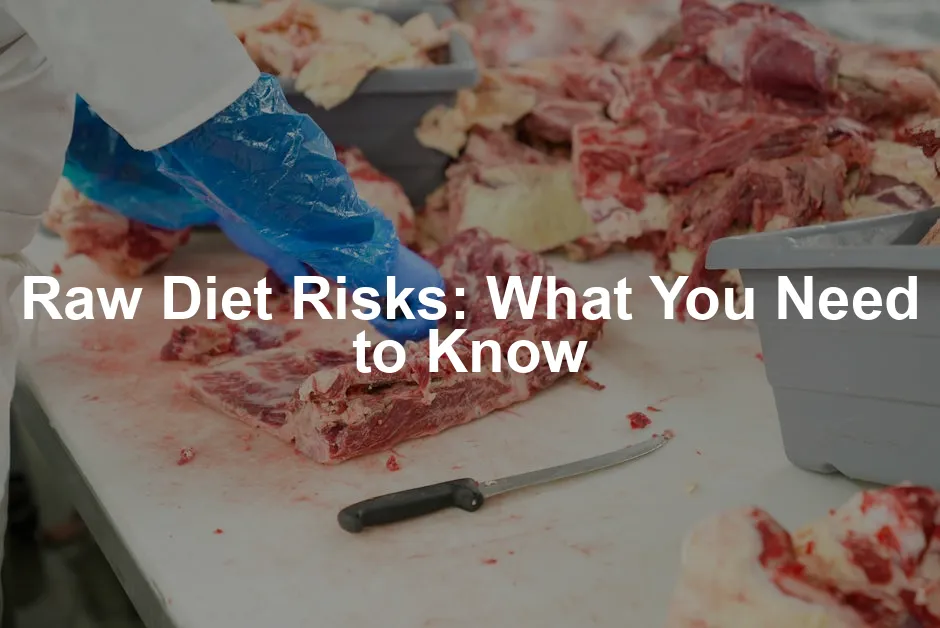Introduction
Raw diets have gained traction among pet owners and health enthusiasts alike. Many believe these diets offer a more natural way to nourish pets and humans. However, the shift toward raw eating has sparked debates among experts. It’s essential to understand the risks involved before making any dietary changes.
If you’re thinking about transitioning your pet to a raw diet, consider using The Complete Guide to Raw Feeding for Dogs. This book is a treasure trove of information that can help you make informed decisions for your furry friend.
Summary and Overview
The appeal of raw diets lies in their perceived health benefits. Proponents claim these diets lead to improved coat condition, higher energy levels, and better digestion. However, concerns persist regarding bacterial contamination and nutritional imbalances. Understanding these risks is crucial for anyone considering a raw diet.
Speaking of health benefits, don’t forget about Greenies Original Dental Treats! They can help keep your dog’s teeth clean while giving them a tasty treat to enjoy. Who knew dental care could be so delicious?
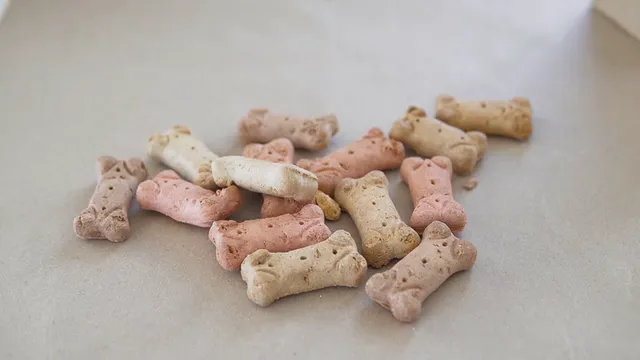
Health Risks of Raw Diets
Bacterial Contamination
Raw diets can harbor harmful bacteria like Salmonella and E. coli. These bacteria often contaminate raw meats, posing health risks for both pets and their owners. In a study by the FDA, about 25% of raw pet food samples tested positive for these pathogens. Bacterial contamination can lead to severe foodborne illnesses. For instance, approximately 1.2 million cases of salmonellosis occur annually in the U.S., with significant hospitalization rates.
Handling raw food increases the risk of spreading these bacteria. Pets can carry bacteria in their saliva and feces. If a pet owner interacts with their pet after feeding them raw food, they might inadvertently transfer pathogens to themselves. To minimize these risks, it’s crucial to practice safe handling. Always wash your hands after touching raw food. Clean surfaces and utensils thoroughly. Following these practices can help keep both you and your pets safe from bacterial infections.
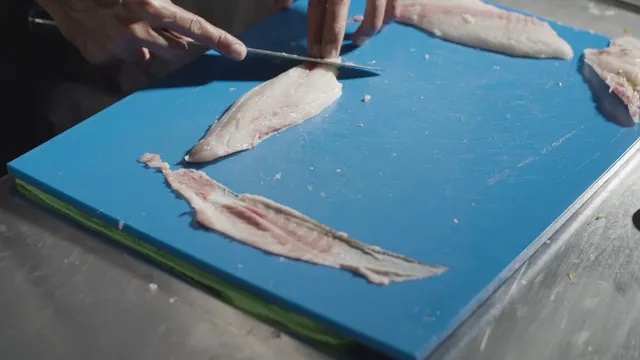
If you’re looking for a convenient way to feed your pets while minimizing mess, consider the PetSafe Healthy Pet Simply Feed Automatic Pet Feeder. This feeder dispenses food at scheduled times, so you can rest easy knowing your pet is well-fed, and you can avoid the hassle of raw food handling!
Nutritional Imbalances
Raw diets may lead to nutritional deficiencies or excesses. Creating a balanced raw diet is challenging, especially for pet owners without veterinary guidance. Essential nutrients, such as calcium and phosphorus, are often inadequately represented in homemade raw meals. For example, a diet overly rich in protein but low in fiber can lead to digestive issues in pets.
Veterinarians stress the importance of consulting with a nutrition expert before starting a raw diet. DIY raw diets can inadvertently miss critical nutrients, affecting your pet’s long-term health. Pets may experience symptoms like lethargy, poor coat condition, or dental issues if their diet lacks balance. Therefore, seeking veterinary advice is essential to ensure your pet receives a complete and balanced diet. This step can prevent potential health risks associated with nutritional imbalances.
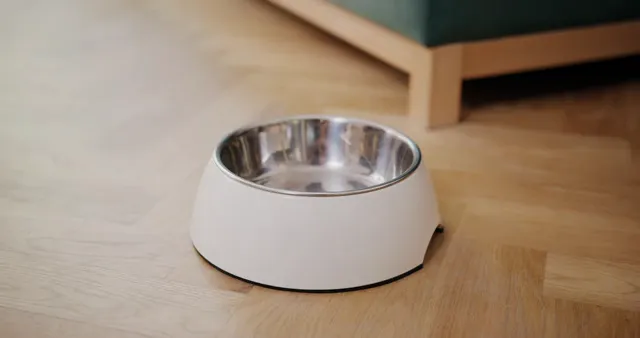
Speaking of balanced diets, have you considered Nature’s Logic Canine Chicken Meal? It’s a great option that provides balanced nutrition without the hassle of raw food preparation.
Parasite Infections
Feeding raw animal products can expose pets and humans to parasites. Common parasites found in raw diets include Toxoplasma, Giardia, and various worms. These parasites often reside in undercooked or raw meats, posing serious health risks.
For pets, symptoms of infection may include vomiting, diarrhea, and weight loss. Humans can also suffer, especially if they handle contaminated food or come into contact with infected pets. Zoonotic diseases, like Toxoplasmosis, can affect pregnant women and immunocompromised individuals severely. To learn more about the risks associated with Giardia, check out this guide on giardia in dogs.
Understanding the risks of parasites in raw diets is essential for pet owners. Learn more about giardia in dogs.
To prevent infection, practice safe food handling. Always wash your hands after handling raw meat. Ensure pets are regularly dewormed and have routine veterinary check-ups. These simple actions can help mitigate the risks associated with parasites in raw diets. If you’re considering a raw diet for your pet, be diligent about their health and safety.
And hey, if your pet gets a little dirty during all that raw food excitement, you might want to stock up on Furminator Undercoat Deshedding Tool. It’s a lifesaver for keeping your pet’s coat looking fabulous!

Vulnerable Groups
Certain populations are especially at risk from raw diets, including children, the elderly, and immunocompromised individuals. These groups may experience more severe health implications if they come into contact with raw foods or animals fed raw diets.
For instance, children can easily contract infections from handling pets or contaminated surfaces. The elderly and those with weakened immune systems face higher risks of serious illnesses from bacteria and parasites. Feeding pets raw diets in these households can amplify these risks.
Pet owners in these vulnerable groups should reconsider raw feeding. Instead, explore safer alternatives that provide balanced nutrition without the associated health risks. Consulting with a veterinarian can ensure that dietary choices are safe for everyone in your household.
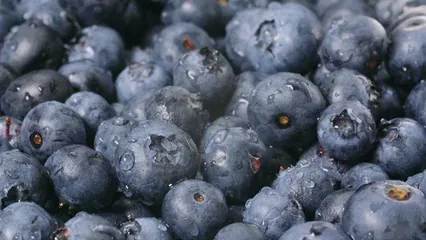
Best Practices for Raw Diets
Safe Handling and Preparation
When preparing raw diets, hygiene is crucial. Start by cleaning your workspace. Use hot, soapy water on all surfaces and utensils. After that, disinfect them with a bleach solution. This helps eliminate harmful bacteria.
Store raw food separately from other foods. Keep it in dedicated containers to avoid cross-contamination. When thawing frozen meat, do so in the refrigerator or microwave, never at room temperature. This prevents bacterial growth.
Always wash your hands thoroughly after handling raw food. Avoid touching your face or mouth until your hands are clean. After feeding your pets, clean their bowls and any surfaces they touched. This routine minimizes the risk of contamination. Consider creating a checklist for safe raw food handling to ensure you don’t miss any steps.

And while we’re on the topic of clean-up, don’t forget the importance of waste disposal! The Earth Rated Dog Poop Bags make it easy to keep your environment clean while being eco-friendly!
Veterinary Consultation
Before starting a raw diet, it’s wise to consult a veterinarian or a qualified nutritionist. They can help ensure your pet’s diet is balanced and meets their nutritional needs. Many pet owners mistakenly believe that raw diets provide all necessary nutrients. However, without proper guidance, these diets can lack essential vitamins and minerals.
A veterinary nutritionist can recommend specific recipes or commercial options that meet safety standards and nutritional adequacy. They can also address any health concerns related to raw feeding. If your pet has pre-existing health issues, professional advice is even more crucial. Schedule a consultation to discuss your pet’s dietary needs and make informed decisions.
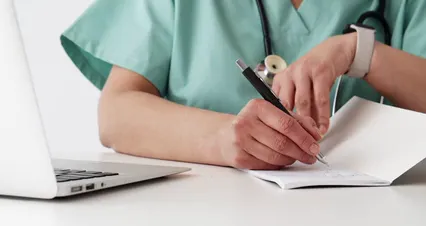
FAQs
Are raw diets safe for pets?
Raw diets can pose safety concerns for pets. Bacteria, such as Salmonella and E. coli, can contaminate raw meats. These pathogens can lead to serious health issues. If you choose a raw diet, ensure it’s from a reputable source. Always consult your veterinarian for guidance on safe feeding practices.
What are the signs of bacterial infection in pets?
Common symptoms of bacterial infections include vomiting, diarrhea, fever, and lethargy. If your pet shows these signs, seek veterinary help immediately. Early intervention can prevent serious complications from infections.
How can I safely transition my pet to a raw diet?
To transition your pet, start slowly by mixing raw food with their current diet. Gradually increase the raw portion over a week or two. Monitor your pet for any adverse reactions during this process. Always consult your vet for tailored advice before making dietary changes.
What should I do if I handle raw food and feel unwell?
If you feel unwell after handling raw food, wash your hands immediately. Monitor your symptoms closely, and if they worsen, consult a healthcare provider. It’s essential to address any potential foodborne illness promptly.
Are there alternatives to raw diets that are safer?
Yes, balanced commercial diets are often safer. These diets are formulated to meet nutritional needs without the risks associated with raw feeding. Home-cooked meals can also be a healthy alternative, provided they are prepared with veterinary guidance.
Can humans get sick from raw pet food?
Yes, humans can contract zoonotic diseases from raw pet food. Pathogens like Salmonella can be transmitted through handling contaminated food or contact with infected pets. Practicing good hygiene is vital to minimize these risks.
What are the long-term health implications of feeding a raw diet?
Feeding a raw diet can lead to chronic health issues, including nutritional deficiencies and recurrent infections. Over time, pets may experience digestive problems, weakened immune systems, or dental issues. Regular veterinary check-ups are crucial for monitoring your pet’s health.
Please let us know what you think about our content by leaving a comment down below!
Thank you for reading till here 🙂 And remember, whether you’re feeding raw or not, a PetFusion Ultimate Dog Bed is a great investment for your pet’s comfort. They deserve the best!
All images from Pexels

